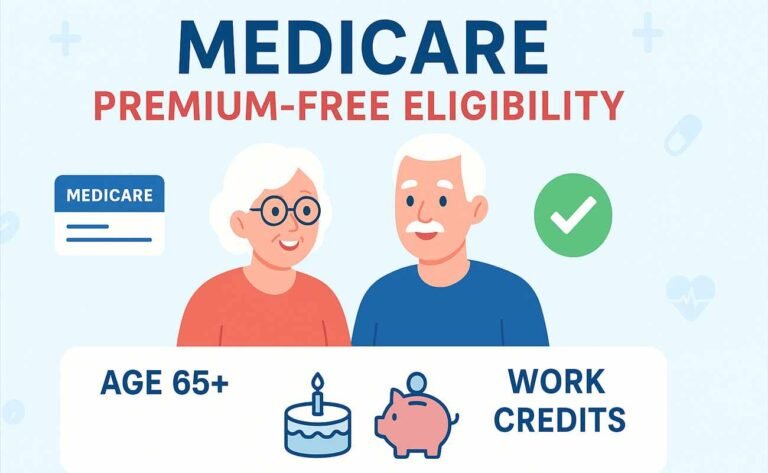Comparing Medicare Advantage vs. VA Benefits: What Veterans Need to Know
Veterans often face unique health care decisions, especially when considering options like Medicare Advantage (MA) alongside their VA benefits. If you’re a veteran wondering if MA plans suit your needs, this guide breaks it down by comparing key aspects such as coverage, costs, and flexibility. MA plans, also known as Medicare Part C, offer an alternative to Original Medicare by bundling services through private insurers, potentially including extras like dental and vision that VA health care might not always cover comprehensively. However, VA health care provides specialized services tailored for veterans, often at low or no cost based on priority groups. Ultimately, the choice depends on your health needs, location, and whether you want integrated care or prefer sticking with VA’s veteran-focused system.
In short, MA isn’t always the best fit for every veteran, but it can complement VA benefits effectively. For instance, if you travel frequently or need broader network access, MA might appeal more. We’ll dive into detailed comparisons, lists of pros and cons, and tables to help you decide. Remember, consulting with a benefits advisor is key before making changes.
Understanding VA Health Care Benefits for Veterans
VA health care stands as a cornerstone for many veterans, offering comprehensive services designed specifically for those who’ve served. It’s not just about doctor visits; it encompasses mental health support, prosthetics, and long-term care. But let’s get into the specifics.
Here’s a breakdown of key VA health care features in a list format for easy reading:
- Eligibility Criteria: Veterans must have served in active military, naval, or air service and received a discharge under conditions other than dishonorable. Priority groups range from 1 to 8, based on factors like service-connected disabilities, income, and combat experience. For example, if you have a 50% or higher disability rating, you’re in Priority Group 1, which means no copays for most services.
- Core Services Covered: This includes preventive care, hospital stays, outpatient visits, and prescription drugs. Specialized programs address PTSD, traumatic brain injuries, and women’s health issues.
- Cost Structure: Many veterans pay nothing for service-connected conditions. Copays apply for non-service-related care, capped at $700 annually for some groups. Income-based sliding scales help keep it affordable.
- Network and Access: VA operates over 1,200 facilities nationwide, including hospitals and clinics. Telehealth options have expanded, making it easier for rural veterans to get care without long drives.
- Additional Perks: Programs like the Veterans Choice Program allow care outside VA if wait times exceed 30 days or travel is over 40 miles. Dental care is available for 100% disabled veterans or those with service-related dental issues.
Transitioning to costs, VA often wins for low out-of-pocket expenses. However, if you’re also eligible for Medicare, combining them could fill gaps. Speaking of which, check out the VA Disability Pay Dates Schedule for insights on when benefits hit your account – it’s handy for planning health-related finances.
What Are Medicare Advantage Plans?
Medicare Advantage plans provide an all-in-one alternative to traditional Medicare, run by private companies approved by Medicare. They’re popular among seniors, including veterans, for their potential extras. But is it right for you? Let’s list out the essentials.
Key elements of MA plans include:
- How They Work: MA replaces Original Medicare (Parts A and B) with a bundled plan that often includes Part D drug coverage. You pay premiums to the insurer, and they handle claims.
- Types of Plans: Health Maintenance Organizations (HMOs) require in-network providers; Preferred Provider Organizations (PPOs) offer more flexibility but higher costs out-of-network; Special Needs Plans (SNPs) cater to chronic conditions.
- Extra Benefits: Many plans cover vision, hearing, dental, and wellness programs – areas where VA might have limitations unless you’re highly disabled.
- Enrollment Periods: Initial enrollment when you turn 65, annual open enrollment from October 15 to December 7, or special periods if you move or lose coverage.
- Provider Networks: Plans have specific doctors and hospitals; check if your VA providers are included or if you can coordinate care.
For veterans, MA can act as a supplement, but it’s crucial to understand overlaps. If you’re exploring Medicare basics, the Medicare Parts A, B, C, D Benefits guide offers a solid overview.
Eligibility for Medicare Advantage as a Veteran
Not every veteran qualifies for MA, but many do once they hit Medicare age. Eligibility ties into your Medicare status.
Detailed eligibility list:
- Age Requirement: Generally 65 or older, though younger veterans with disabilities (like ESRD) might qualify earlier.
- Medicare Enrollment: You must have Parts A and B active. VA benefits don’t count as Medicare; they’re separate.
- Residency: Live in the plan’s service area, which is usually county-based.
- No ESRD Restriction: Most MA plans now accept those with end-stage renal disease, a change from past rules.
- VA Interaction: You can have both VA and MA; VA doesn’t affect MA eligibility, but you can’t use VA to pay MA premiums.
Anecdotally, I know a veteran friend who switched to MA after retiring in a rural area where VA clinics were sparse. It worked for him, but he still uses VA for specialized PTSD therapy. Always verify on the Veterans Affairs website for personalized eligibility checks.
Comparing VA Health Care and Medicare Advantage Plans
To make this decision easier, let’s compare side-by-side. This table highlights key differences and similarities.
| Aspect | VA Health Care | Medicare Advantage Plans |
|---|---|---|
| Coverage Scope | Focuses on veteran-specific needs like combat injuries, mental health, and prosthetics. Includes hospital, outpatient, and Rx. | Bundles hospital, medical, and often drugs, plus extras like dental/vision. Less specialized for veterans. |
| Cost to You | Low or zero for service-connected issues; copays for others, income-based. No premiums. | Monthly premiums average $18 (2023 data), plus deductibles/copays. Out-of-pocket max around $8,300. |
| Provider Network | VA facilities nationwide; community care options if needed. | Private networks; may include VA docs but often requires coordination. |
| Prescription Drugs | Covered through VA pharmacies; formularies tailored to veterans. | Included in most plans via Part D; broader options but potential higher costs. |
| Flexibility | Tied to VA system; telehealth growing. | More choices in providers, especially PPOs; good for travelers. |
| Enrollment | Based on service history; ongoing. | Annual periods; must maintain Original Medicare. |
| Extras | Long-term care, caregiver support programs. | Fitness programs, over-the-counter allowances. |
As you can see, VA excels in specialized care, while MA offers broader perks. If costs concern you, MA might add up, but caps protect against high bills.
Pros and Cons of Choosing Medicare Advantage for Veterans
Weighing options? Here’s a pros list for MA:
- Broader Network Access: Ideal if you live far from VA centers or travel often.
- Additional Benefits: Dental, vision, and hearing aids – VA covers these sparingly.
- Cost Caps: Annual out-of-pocket limits prevent financial ruin from big medical events.
- Coordination with VA: Use MA for routine care and VA for specialized needs.
- Wellness Incentives: Many plans offer gym memberships or nutrition counseling.
On the flip side, cons include:
- Potential Higher Costs: Premiums and copays can exceed VA’s low fees.
- Network Limitations: HMOs restrict choices; not all docs accept MA.
- Administrative Hassles: Coordinating between VA and MA claims can be tricky.
- No VA-Specific Focus: Lacks tailored programs for service-related issues.
- Enrollment Windows: Miss the period, and you’re stuck until next year.
Transitioning smoothly, if pros outweigh cons for you, MA could enhance your coverage.
Pros and Cons of Sticking with VA Health Care
For balance, VA pros:
- Tailored Services: Programs for PTSD, Agent Orange exposure, and Gulf War illnesses.
- Low Costs: Often free for priority groups; no premiums eat into your budget.
- Integrated System: One-stop shop for records, prescriptions, and care.
- Community Support: Veteran-centric environment fosters camaraderie.
- No Annual Limits: Unlimited care for eligible conditions.
Cons of VA:
- Wait Times: Some facilities have backlogs, though telehealth helps.
- Limited Extras: Dental and vision not standard for all.
- Geographic Barriers: Rural areas might lack full services.
- Bureaucracy: Paperwork for benefits can feel overwhelming.
- No Private Options Built-In: Less flexibility for non-VA providers without approvals.
When Should Veterans Opt for Medicare Advantage Over VA?
Certain scenarios make MA a better choice. Here’s a situational list:
- If You Travel Frequently: MA’s national networks beat VA’s facility-based setup.
- Need Extra Coverage: For hearing aids or routine dental, MA fills gaps.
- Live in Urban Areas: More MA providers available compared to sparse VA clinics.
- Have Dual Eligibility: Combine with Medicaid for even lower costs.
- Prefer Private Care: If VA wait times frustrate you, switch for quicker access.
Conversely, stick with VA if your conditions are service-connected – it’s hard to beat free care.
Cost Breakdown: VA vs. Medicare Advantage
Costs vary widely, so let’s table them out for clarity.
| Cost Element | VA Health Care Average | Medicare Advantage Average |
|---|---|---|
| Premiums | $0 | $0-$200/month (varies by plan) |
| Deductibles | None for service-connected; up to $150 for others | $0-$500+ |
| Copays | $15-$50 per visit; waived for many | $0-$50 per visit; higher for specialists |
| Prescriptions | $5-$11 per month supply; caps apply | Tiered: $0-$47 for generics |
| Out-of-Pocket Max | $700 annual cap for some groups | $3,000-$8,300 annually |
| Hospital Stays | Free for service-connected; otherwise $1,364/day after deductible | $0-$400/day, depending on plan |
Note: Figures are approximations; check Medicare official site for current rates. VA often costs less overall for disabled veterans.
Enrollment Process for Medicare Advantage as a Veteran
Switching? Follow these steps in list form:
- Confirm Medicare Eligibility: Ensure Parts A and B are active.
- Research Plans: Use Medicare’s plan finder tool; filter for veteran-friendly options.
- Check VA Coordination: Notify VA if enrolling to avoid overlaps.
- Enroll During Windows: Initial, annual, or special enrollment periods.
- Review Costs and Networks: Pick based on your doctors and budget.
- Start Coverage: Plans begin January 1 or sooner in specials.
It’s straightforward, but don’t rush – mistakes can lock you in for a year.
Common Questions About Medicare Advantage and VA for Veterans
- Can I Have Both? Yes, and many do. Use VA for specialized care, MA for extras.
- Does MA Cover VA Services? No, they’re separate; MA doesn’t pay VA bills.
- What If I’m 100% Disabled? VA covers most; MA might be redundant but useful for spouses.
- How Do Premiums Work? VA has none; MA varies – shop around.
- Can I Switch Back? Yes, during open enrollment.
- Impact on TRICARE? If you have TRICARE For Life, it works with Original Medicare, not always MA.
- Tax Implications? Premiums might be deductible; consult a pro.
- Best for Low-Income Veterans? VA, but MA SNPs for dual eligibles help.
- Telehealth Coverage? Both offer it, but MA might have more options.
- Appeals Process? VA has its system; MA follows Medicare rules.
These cover the basics, but personalized advice is best.
Final Thoughts on Choosing Between MA and VA
In the end, whether Medicare Advantage fits veterans depends on individual needs. If VA meets yours, stick with it. But for added flexibility, MA complements well. Weigh the lists and tables above, and consult experts.






